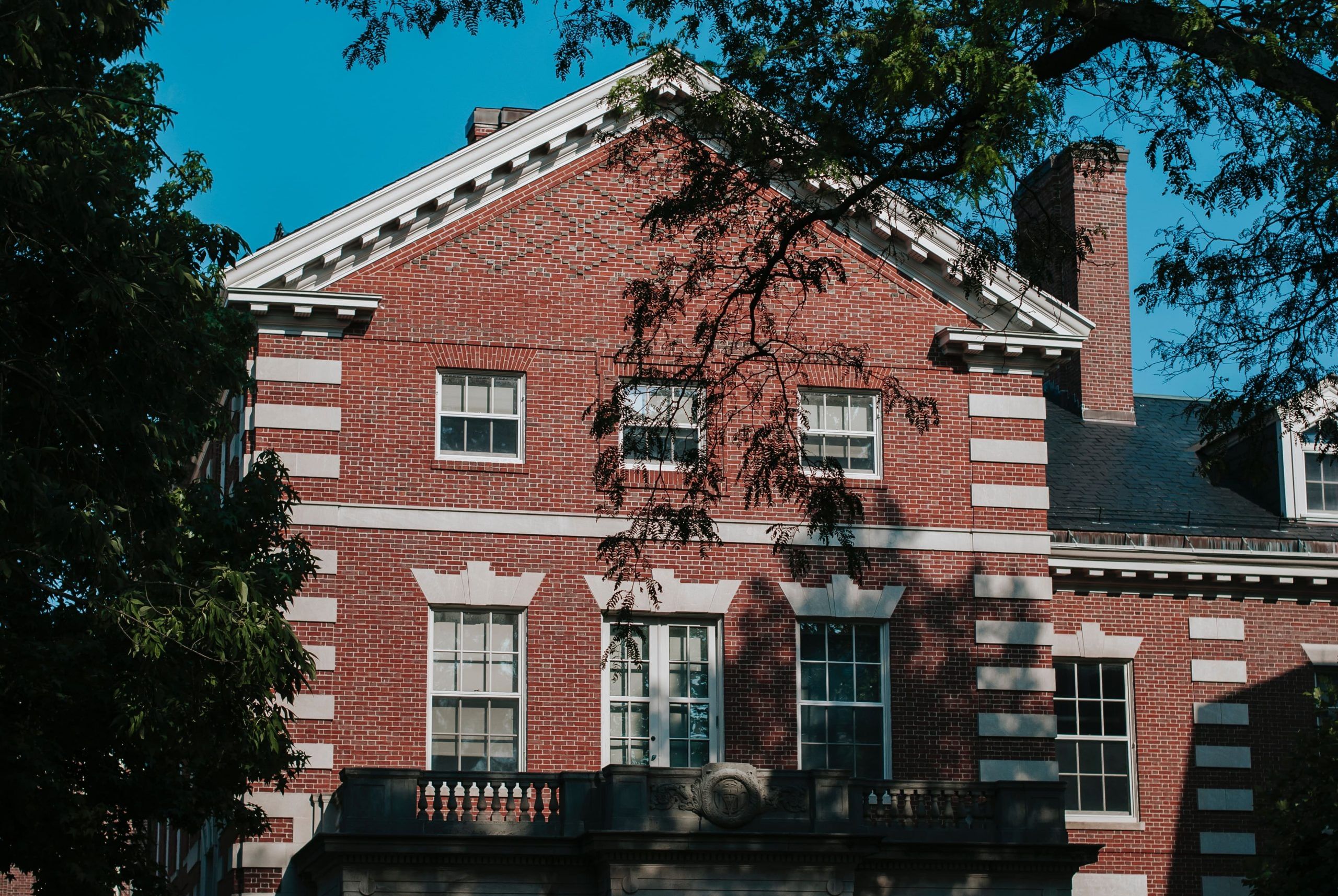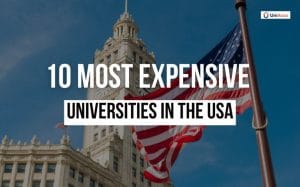When you decide to study in the United States, you are making a fantastic decision for your future and will be joining over one million other international students in the country. Academically and geographically, the USA is a vast and diverse country in which to study. It has the most universities and colleges per capita in the world, with over 4000 in total. It’s also frequently referred to as “50 different countries in one.” There are several reasons to study in the United States, including job opportunities and cultural diversity. If you are an international student looking for assistance in making a college decision, continue reading our guide on Why study in the USA – we will go over all of the fundamentals of studying and living in the USA with an in-depth explanation of the education system and its universities.
This guide introduces you to all you need to know about pursuing your higher education in the USA. Starting from part-time and full-time work opportunities, immigration processes, and international student funding, you will have learned everything you need to know by the end of this guide to make an informed decision about furthering your higher education. To get you there, we’ll go through the following points:
- Reasons to study in the USA as an international student
- Higher educational institutions in the USA
- International student life in the USA
- Funding & Financing in the USA
- Can I work & study in the USA?
Reasons To Study In The USA As An International Student
American universities are widely known for the quality of their teaching and research. Moreover, the USA is one of the countries that accept international students quite easily. The United States is the most popular and largest choice for international students pursuing higher education overseas. The USA education system is the most versatile and open higher education system in the country for international students.
Approximately 30% of all existing international students in the globe study in the United States now. Wish to know why. Here are the top reasons to study in the USA.
Cutting-Edge Technology
Universities in the USA are worldwide leaders in technology and research, and they are committed to providing students with the same opportunities. The emphasis is on exposing students to the most recent advances in science, engineering, and allied disciplines.
Since World War II, the United States has been the world leader in Science and Technology. It has attracted top-tier scholars and scientists from throughout the world to pursue their scientific goals. Since 1950, the USA has produced almost half of the Nobel Prize laureates. Today, it is home to tech behemoths such as Apple, Microsoft, Google, Facebook, and Intel, among many other industry leaders.
Academic Excellence
The US education system is one of the best in the world, with exceptional programmes in every subject. At the undergraduate level, exceptional curriculum choices are available in both conventional and professional disciplines. At the Master’s and PhD levels, students are frequently given the opportunity to interact with and learn from some of the world’s best experts. Qualifications conferred by universities in the United States are worldwide recognised for their academic quality.
Flexibility
Some of the best universities in the US, and more, offer international students the flexibility to tailor their courses as per their interests & skills. In fact, the USA is known for providing a diverse range of courses to its students; more than any other country in the world. There’s always an option for students no matter what their course of study is. It is quite common in the USA to switch universities after two years of study while pursuing undergraduate courses within the same faculty. Most universities allow transfer credits from other universities for the same subject. As a result, you are not obliged to complete all four years of study at the same college in order to obtain your degree. This flexibility allows you to transfer your credits to a higher-ranked college if you have excellent grades.
Campus Life
Campus life is also extremely exciting for students since, while the major focus is on enhancing your academic experience, you also have the opportunity to participate in many clubs and cultural events. As an international student, you can have fun at your university campus, from the exciting fresher night parties to team-building events.
Cultural Diversity
The United States is a favourite destination for immigrants, particularly those who have been exiled by their communities for reasons of politics, religion, or even race/ethnicity. The United States is a melting pot of many waves of immigration and migration, making it an attractive destination for international students. The immigrant population in places such as Los Angeles, Miami, New York City, and Boston is large enough to make one feel at ease. Depending on your interests, you may wind up in a big metropolis, a small city, the country, or even a college town. However, the bottom line is that you get to witness, experience, and learn useful languages for students along with the cultures of various countries.
Support Services
Support services are one of the main reasons to study at an American university, especially for those who are new to the country and may feel lost and disoriented at first. Students who want to study in the United States can get help from international student support programmes. From planning orientation programmes to creating resumes, help is available at every step.
Career Support
International students can work on campus, receive off-campus internships, and work in research and training as graduate students. Career counsellors in international-friendly study programmes are skilled in assisting study abroad students in finding their first internship and OPT (Optional Practical Training) or CPT (Curricular Practical Training) work experience opportunities.
Higher Educational Institutions In The USA
There are several options for furthering your education in the United States. You can select the type of institution you want to attend based on the type of education you want. The following are the several types of higher education institutions in the United States.
Public Universities – In the United States, each state has at least one top-ranked university that provides low-cost higher education to students. These institutes are frequently funded by the state government and its affiliated agencies.
Private Universities – In contrast to public institutions, these colleges are run and operated privately and from their own funds. They are on the more costly end of the spectrum.
Community Colleges – Community colleges are an essential part of the education system in the United States. A community college is precisely what its name implies: a higher education institution that primarily serves the community in which it is located. Community colleges include typical academic subjects such as arithmetic and history that will transfer to a four-year college or university, as well as community programmes such as resume preparation for job seekers or swim lessons for children. Community colleges include ESL courses as well as other programmes that prepare students to study at the university level.
Technology Institutions – Technology Institutes in the United States provide integrated four-year scientific and technology curriculum. Most of the STEM courses are well-taught at these institutions.
Top Universities To Study In The USA
According to the QS World University Rankings 2022, here’s a list of the top 10 universities in the USA.
| Top Universities | World Ranking |
| Massachusetts Institute of Technology (MIT) | 1 |
| Stanford University | 3 |
| Harvard University | 5 |
| California Institute of Technology (Caltech) | 6 |
| University of Chicago | 10 |
| University of Pennsylvania | 13 |
| Yale University | 14 |
| Columbia University | 19 |
| Princeton University | 20 |
| Cornell University | 21 |
International Student Life In The USA
Students who gain international exposure can significantly advance their careers. It strengthens your résumé and comes in useful during job interviews. While it may seem like a daunting experience for an international student moving to the States for the first time, awareness is what will make your transition abroad a smooth one. It is important that you are well aware of the costs involved, and plan and prepare your budget in accordance. To make it simpler for you, we’ve segregated the different kinds of expenses you may come across with rough & approximate estimates and hope this will be of use to you.
Tuition Fees
The cost of studying in the United States is heavily influenced by the course type, course structure, university reputation, and university type. The table below shows the approximate tuition costs for various levels of study in the United States.
| Programme | Tuition fees (USD) |
| English language studies | $700 – $1200 per month |
| Undergraduate bachelor degree | $20,000 to $40,000 per year |
| Graduate programmes | $20,000 to $45,000 per year |
| Doctoral degree | $28,000 to $55,000 per year |
| Community colleges | $6,000 to $20,000 per year |
Accommodation Costs
These are the expenses associated with staying on or off-campus. They are meticulously planned after taking into account many other expenditures like upkeep or the maintenance charges, the type of accommodation, the facilities available, the inventory, and many other factors. The annual cost of living in the United States is projected to be between $5,000 and $7,500 for international students.
Living Expenses
Students spend a large proportion of their money on essentials such as food and clothing. While the prices vary per state in the United States, based on the purchase quantity and location, the estimated costs of a few of the living expenditures are shown below –
| Requirements | Costs |
| Groceries | $150 |
| Electricity | $20 |
| Home Internet | $15 |
| Restaurant Meals | $75 |
| Cell Phone | $50 |
| Entertainment | $100 |
| Shopping | $100 |
| Weekend Activities | $100 |
Health Insurance
Only a few universities in the United States offer health insurance. It is usually advised that students obtain health insurance in advance, either through their institution or with the assistance of their support services. A student health insurance plan typically costs between USD 1,500 to USD 2,500 per year.
Student Visa
Anyone planning to study in the United States may be granted one of the three different types of US visas: F1 Visa, J1 Visa, or M1 Visa. The F1 and J1 visas permit but do not guarantee work. The M1 Visa, on the other hand, does not permit work.
F1 Visa: The “F” visa is intended for academic study. An F1 visa is given to students who are enrolled in an academic programme or an English language programme. F1 visas are the most frequent type of international student visa in the United States.
J1 Visa: A J1 visa is provided to students who need practical training that is not available in their home country in order to complete their academic degrees. J-1 student status allows for the same work as an F1 visa, subject to the same restrictions, as long as the exchange visitor programme sponsor gives consent.
M1 Visa: An M1 visa is issued to a student enrolled in a non-academic or vocational school. M-1 visa holders enrolled in technical or vocational programmes are not permitted to work throughout their studies. M-1 student visa applicants must show that they have sufficient means to pay all tuition and living expenses for the length of their anticipated stay.
While the cost of attending an American college may be a tad bit overwhelming, it is a fantastic social experience. Greek life is an important part of campus culture in the United States. This is a fraternity for men and a sorority for women. This exemplifies camaraderie, harmony, and being a part of a group. Many universities are also well-known for their sports programmes. If you are an overseas student, you may participate by attending games on campus and perhaps joining a team, whether at the collegiate level or for leisure. Colleges are frequently located in cities filled with students, making the experience even more enjoyable with a variety of things to do!
Funding Opportunities In The US
As you begin to explore funding options for your educational and living expenses in the United States, bear in mind that you will be unable to work in the United States unless you have been given teaching or research assistantship. Working while on a student visa is quite tricky, and you cannot rely on future income while providing documentation of your financial means. The income you base your application on must be guaranteed and equal to or greater than the costs of your first year of education.
However, if you’re looking for ways to fund your education expenses, you can always apply for scholarships. UniScholars is a platform that offers merit-based and need-based scholarships for studying in the US. You can apply from over 1000+ scholarships available for you, most of which will contribute towards your tuition fees, accommodation, as well as living expenses.
Can I Work & Study In The US?
The cost of studying in the USA may be fairly pricey for international students, as well as for American students. Working while studying might help you save money on your education and gain valuable job experience. International students are permitted to work in the United States while studying, although there are certain constraints.
International students with F-1 and M-1 visas are permitted to work on campus and in certain training programmes. During their first academic year, students are not permitted to work off-campus. On-campus jobs are geared for students, such as those in the library, cafeteria, or student centre.
After completing their first academic year, students can obtain off-campus employment through programmes designed specifically for international students seeking employment, such as Optional Practical Training (OPT), Science, Technology, Engineering, and Mathematics (STEM) Optional Practical Training Extension, and Curricular Practical Training (CPT).
Thank you for reading this guide on ‘Why Study In The USA’. If you’d like to read more, check out these blogs that might be of interest to you –















0 Comments